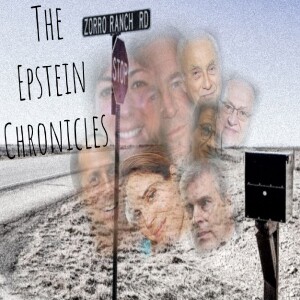
The Cartel Pipeline: From Production To Profit (8/20/24)
 2024-08-20
2024-08-20
Download
Right click and do "save link as"
Drug cartels employ a complex and sophisticated logistical network to move drugs across international borders. This network includes several key components:1. Production and Packaging
In this episode, we take a look behind the curtain at the logistics behind transnational criminal groups.
(commercial at 10:26)
to contact me:
bobbycapucci@protonmail.com
Become a supporter of this podcast: https://www.spreaker.com/podcast/the-epstein-chronicles--5003294/support.
view more
- Cocaine: Produced in the Andean region (Colombia, Peru, Bolivia) from coca plants, refined into cocaine hydrochloride, and packaged in innovative ways to avoid detection.
- Heroin: Derived from opium poppies in Mexico and Afghanistan, processed into heroin, and often hidden in compressed bricks or disguised in other substances.
- Methamphetamine: Manufactured in large-scale "super labs" in Mexico, using precursor chemicals smuggled from countries like China and India.
- Synthetic Drugs: Includes fentanyl and ecstasy, produced in clandestine labs using chemicals from China, often disguised as prescription drugs or other products.
- Land Routes: Drugs are moved through Central America and Mexico using convoys, hidden compartments in vehicles, and bribed officials. Cartels often use legitimate businesses as fronts for smuggling operations.
- Maritime Routes: Cartels utilize narco-submarines, cargo ships, fishing vessels, and go-fast boats to transport drugs across oceans, often transferring them at sea to avoid detection.
- Air Routes: Private jets, light aircraft, and commercial airlines are used, with drugs hidden in luggage, body cavities, or the aircraft structure. Airdrops in remote areas are also common.
- Tunnels: Sophisticated cross-border tunnels equipped with lighting and ventilation are dug under the U.S.-Mexico border, allowing drugs to bypass checkpoints.
- Law Enforcement: Cartels bribe police, customs officials, and military personnel to ignore or facilitate drug shipments. Corruption extends to turning law enforcement officers into cartel operatives.
- Political Corruption: High-level bribery of politicians ensures protection from prosecution and favorable policy decisions.
- Corporate Corruption: Legitimate businesses are infiltrated or co-opted to facilitate smuggling and money laundering.
- Distribution Networks: Drugs are stored in safe houses and distributed through local gangs or independent distribution cells in major cities.
- Money Laundering: Cartels use shell companies, trade-based money laundering, real estate investments, and cryptocurrencies to clean illicit profits and reintegrate them into the legal economy.
- Drones: Used for surveillance and transporting small drug shipments across borders.
- Cryptocurrency: Facilitates anonymous transactions and money laundering.
- Encrypted Communication: Custom encryption tools and devices protect cartel communications from law enforcement.
- Counter-Surveillance: Use of lookouts, advanced technology, and signal jamming to evade or disrupt law enforcement operations.
In this episode, we take a look behind the curtain at the logistics behind transnational criminal groups.
(commercial at 10:26)
to contact me:
bobbycapucci@protonmail.com
Become a supporter of this podcast: https://www.spreaker.com/podcast/the-epstein-chronicles--5003294/support.
More Episodes
012345678910111213141516171819
Create your
podcast in
minutes
- Full-featured podcast site
- Unlimited storage and bandwidth
- Comprehensive podcast stats
- Distribute to Apple Podcasts, Spotify, and more
- Make money with your podcast
It is Free
- Privacy Policy
- Cookie Policy
- Terms of Use
- Consent Preferences
- Copyright © 2015-2024 Podbean.com





